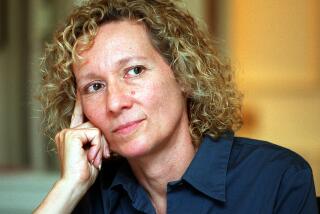William Kieschnick dies at 90; engineer led Atlantic Richfield oil company
William Kieschnick, a chemical engineer who in the 1980s led the Atlantic Richfield oil company and used his executive skills to help stabilize the fledgling Museum of Contemporary Art in Los Angeles, has died. He was 90.
Kieschnick had Parkinson’s disease and recently suffered a stroke, family members said. He died Wednesday in Napa, his home since 1990.
Soft-spoken and understated, Kieschnick guided Los Angeles-based Arco through a period of dramatic cutbacks. During his tenure as president and chief executive from 1981 to 1985, he laid off 13% of the workforce, reduced spending on exploration, closed 2,000 gas stations, borrowed billions to buy back outstanding shares and ward off corporate predators, and sold the metals and mining operations championed by his flamboyant predecessor, Robert O. Anderson.
“We don’t have to be the biggest to be the best,” he told The Times in May 1985, a month before the surprise announcement of his retirement at the age of 62.
Kieschnick also surprised the art world with his commitment to MOCA.
He helped the museum through rocky times even after leaving Arco, where it had been a corporate cause. Under Kieschnick’s leadership, the museum opened the “Temporary Contemporary” — the former city warehouse in Little Tokyo that was its interim home during construction of its main galleries downtown. The Temporary Contemporary has since become a permanent branch of the museum.
Kieschnick also helped set up financing of an $11-million acquisition: 80 abstract expressionist and pop art works from the collection of Giuseppe Panza di Biuomo.
MOCA “is a precocious adolescent,” he said in 1986. “It has a lot of growing pains and a lot of promise.”
Although a nuts-and-bolts engineer, Kieschnick said the “ambiguity” of modern art helped open technical types to “the intuitive aspects of experience.”
It “adds zest and ripple to the sea,” he said.
Born in Dallas on Jan. 5, 1923, William Frederick Kieschnick grew up in modest circumstances, the son of a furniture and rug buyer who lost his job in the Depression. As a student at Rice University, Kieschnick hauled luggage at a train station for tuition money. During World War II, he left school to enlist in the Army, fighting in North Africa and Italy.
He graduated from Rice in 1946 and took an engineering job with what was then known as the Atlantic Refining Co. He remained with the company for 38 years, working in Lafayette, La., Philadelphia and Dallas before rising to top jobs in Los Angeles.
Kieschnick took the reins as president and chief executive during a period of shrinking profit margins and decreasing demand for oil.
“There was a view a few years back that this company maybe could coast,” he told the New York Times in 1982. “None of us believe that now.”
His low-key style in high-pressure jobs won him friends.
When he took over the MOCA board chairmanship, his predecessor, philanthropist Eli Broad, said: “Bill has a different style. He can work out a consensus with everyone loving him. I operate in a Gen. Patton style and just charge ahead.”
But Kieschnick also had a deep streak of iconoclasm, said his son, Michael Kieschnick.
In the 1950s, Kieschnick helped found a Dallas church that was “antiwar and dedicated to racial justice — this at a time in Dallas when neither was popular,” Michael Kieschnick said.
In his later years, Kieschnick was concerned about global warming but declined his son’s invitation to get arrested for the cause.
“I can tell you he considered it,” said his son, a well-known Bay Area activist, “but doing civil disobedience was a step too far.”
Kieschnick was married three times. Betty Jane Kieschnick died in 1978 and Keith Ann Kieschnick died in 1995. Besides his son, he is survived by his wife, Carol Kieschnick, daughter Meredith, stepdaughter Cynthia, 10 grandchildren and a great-granddaughter.
In retirement, he helped restore the 1880 Napa Valley Opera House and continued to pursue his passion for dancing — a skill he learned in his typically methodical style, pacing over cardboard footprints hundreds of times until he got it right.
“He was sought out for West Coast swing,” his son said. “He danced well into his 80s.”
More to Read
Start your day right
Sign up for Essential California for the L.A. Times biggest news, features and recommendations in your inbox six days a week.
You may occasionally receive promotional content from the Los Angeles Times.







